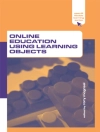This book will help readers understand the practice of qualitative research–whether they want to do it, teach it, or just learn about it. All the major research phases are encompassed (startup, design, data collection, analysis, and composing), including newly emerging trends. Numerous easy-to-read vignettes show how other scholars have successfully implemented specific procedures. Equally distinctive, the book presents qualitative research as an adaptive craft. The array of choices among different procedures and methods enables readers to customize their own studies and to accommodate different worldviews and genres.
New to This Edition:
*Stronger discussion of different worldviews (e.g., constructivism, postpositivism, and pragmatism) and how they relate to different methodological choices.
*Clearer emphasis on doing a generalized qualitative study, while acknowledging 12 specialized genres (e.g., action-based research, arts-based research, autoethnography, grounded theory, phenomenology, and others).
*Expanded discussions of different kinds of qualitative study samples and of mixed methods.
*New ideas on how to avoid getting stalled when analyzing qualitative data.
*Consideration of an additional way of concluding a qualitative study: by taking action.
Pedagogical Features
*Chapters start with an abstract and end with a suggested exercise.
*Key terms and concepts appear in boldface throughout the text and are listed in end-of-chapter recaps as well as in the book’s glossary.
*Sections within each chapter start with a preview box: “What you should learn from this section.‘
*An appendix presents a semester- or yearlong field-based project.
Inhaltsverzeichnis
I. Understanding Qualitative Research
1. What Is Qualitative Research–and Why Might You Consider Doing Such Research?
2. Getting Ready to Do Qualitative Research
3. How to Start a Qualitative Research Study
II. Doing Qualitative Research
4. Choices in Designing Qualitative Research Studies
5. Doing Fieldwork
6. Data Collection Methods
7. Recording Data
8. Analyzing Qualitative Data, I: Compiling, Disassembling, and Reassembling
9. Analyzing Qualitative Data, II: Intepreting and Concluding
III. Presenting the Results from Qualitative Research
10. Displaying Qualitative Data
11. Composing Research, to Share It with Others
IV. Taking Qualitative Research One Step Further
12. Broadening the Challenge of Doing Qualitative Research
Appendix A. Illustrative Study Bank
Appendix B. Two Levels of Data Collection Units in Illustrative Qualitative Studies Cited in This Book
Appendix C. A Semester- or Year-Long Project
A Glossary of Special Terms Used in Qualitative Research
Über den Autor
Robert K. Yin, Ph D, is Chairman of the Board and CEO of COSMOS Corporation, an applied research and social science firm that has been in operation since 1980. COSMOS has successfully completed hundreds of projects for government agencies, private foundations, and other entrepreneurial and nonprofit organizations. Dr. Yin has authored five books–including
Case Study Research, now in its fifth edition–and over 100 peer-reviewed articles. His research has covered a wide array of fields, such as primary, secondary, and postsecondary education; health promotion, HIV/AIDS prevention, and substance abuse prevention; organizational development and program evaluation; neighborhood, community, and urban development; and technological innovation and communications.












